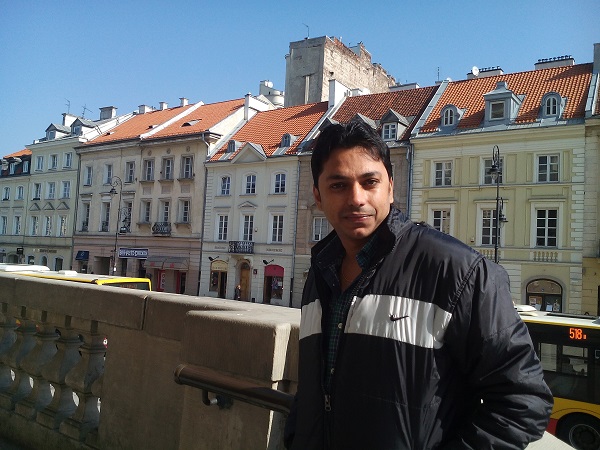Warsaw: Steeped in history
The Polish capital of Warsaw has much to offer, whatever be one’s areas of interest ~ art, history, science, music, religion, Jewish history or nightlife.
It was evening and the temperature was dipping to almost freezing point. None of us dared to step out of our van to explore the beautiful Place of Culture and Science ~ a tower building in the city centre. However, our tour guide was entreated us to come out as missing it would be a great “loss” and that this would be the last stop. Of course, it was just a trick; from there she took us two more places citing the same lines. We were in Warsaw, the capital city of Poland and the temperature was –2 degrees Celcius. We had flown in the same day from India and we did not expect the mercury to touch such lows, making our warm clothes and jackets absolutely useless.
To the guide’s credit, we stepped further to see the tallest building in Poland, also known as the Stalin Palace. The tower was commissioned by Stalin and gifted to the Polish nation by Russia. While entering the tower, our guide informed us that its architecture and sculptures, depicting “working people” (labour). The building houses cinemas, theatres, libraries, sports clubs, universities and much more. Taking the elevator to the rooftop, one can get a beautiful 360-degree view of Warsaw city. Restored from ashes after being completely destroyed by Nazis during World War II, it is today the largest city in Poland. Whether one is here to explore the cobbled streets of the Old Town, enjoy world-class dinning or lose oneself in some of Europe’s best bars, one would hardly be disappointed by what modern Warsaw has to offer.
Also read: Wieliczka Salt Mines: A love story and an ode to survival (travellernook.com)
Surprise start
It was around 9.30 am when we landed at the Warsaw Okecie Airport. The weather was fine, a perfect sunny day for an outing. As we reached our hotel ~ Polonia Palace hotel ~ our guide was already present there to take us out for sightseeing. We grabbed a quick breakfast and started off. Soon a sky blue Nysa Van stopped in front of us. At first we thought it must be for someone else but our guide asked to get into it. It was a different world we stepped into the van. The driver was dressed in a typical Russian attire, the telephone was an antique, with wire ~ all in all it was no ordinary van but a period vehicle built in 1974 and driven for years by the communist police forces. We could not have enough of clicking photographs ~ with the driver, the old phones and selfies.
Ill-fated
As we set out to explore the city, we came across many harsh moments of history. There were hundreds of war stories connected with Warsaw ~the more tales one heard the more interest they raised. In short, Warsaw was both unlucky and lucky too. Unlucky because the city was destroyed completely in WW-II because of its unfortunate location on the east-west and north-south crossroads. Warsaw had to struggle a lot through the centuries including Communist rule. The city is lucky because today it bustles with confidence and creativity ~ the dark patches of yesterday are no longer visible. However, the Polish capital does not impress ~ certainly it is no Paris or Venice. However, the city is described as a place where one can enjoy more as one explores it. Whatever one’s areas of interest ~ art, history, science, music, religion, Jewish history or nightlife ~ Warsaw has it all.
Also read:A journey to Niagara (travellernook.com)
Royal route
Our first day’s exploration began with Royal Route ~ a street that dates back to the 17th century and connected to Warsaw royalty. This half-an-hour guided tour was a full of information about the history of Warsaw. The Royal Route starts at Zamkowy Square, goes through Łazienki Królewskie and then on to Wilanów. Each and every part represents the arteries of the city. Though it was completely destroyed during World War II (only two buildings survived) it was rebuilt based on Bellotto’s paintings from the 18th century, making it to the UNESCO list as an incredible example of complete reconstruction.
The old town is as charming as any in Europe, with cobbled streets lazily meandering between pastel-shaded buildings and old merchant houses with different paintings and murals. Buskers play folk music on every corner and terrace cafés and restaurants hum with tourists. Ice cream stalls, galleries and souvenir shops are plentiful and the squares are essentially giant photo opportunities.
Also read: The other side of Krakow (travellernook.com)
.png)
